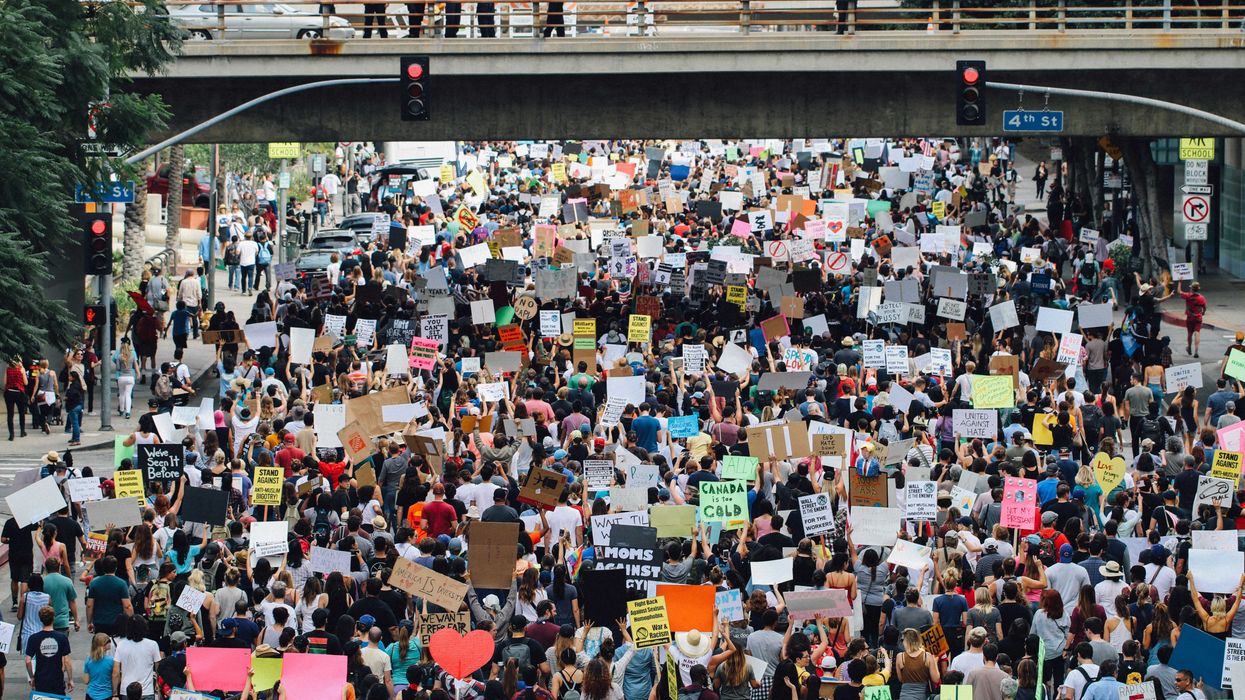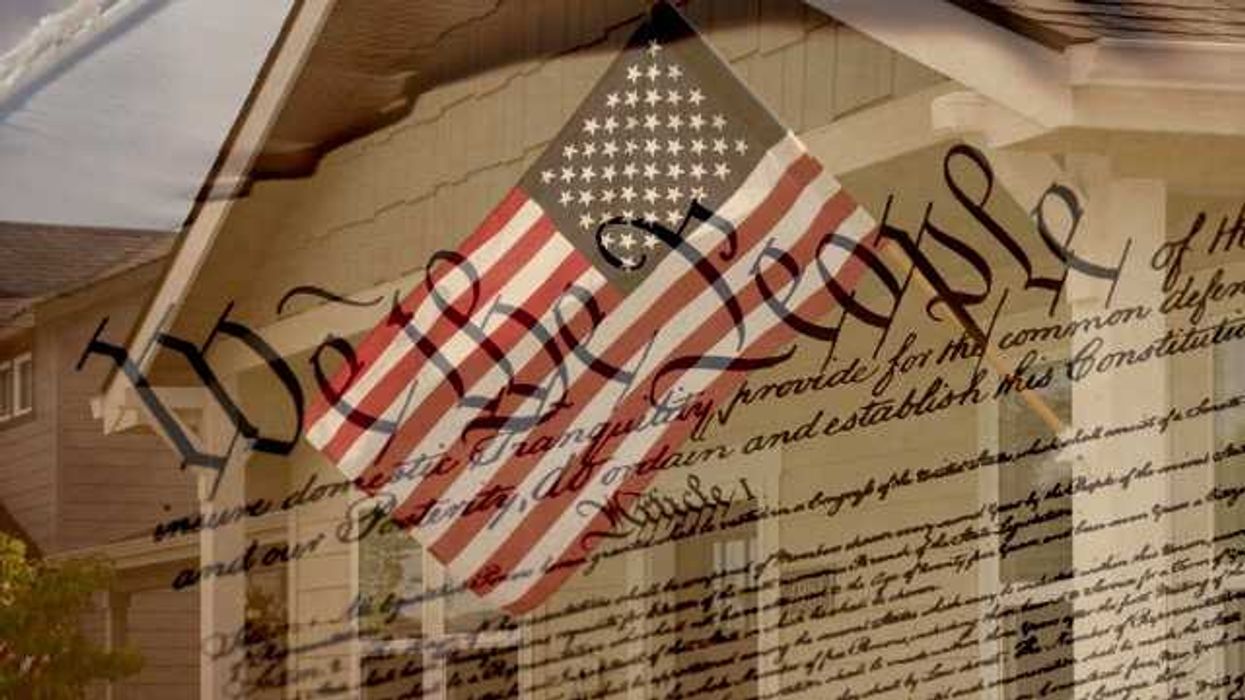“Congress shall make no law respecting an establishment of religion, or prohibiting the free exercise thereof; or abridging the freedom of speech, or of the press; or the right of the people peaceably to assemble, and to petition the government for a redress of grievances.”
— First Amendment to the U.S. Constitution
“When the people stand together, even the most ruthless ruler cannot hold them down.”
— Václav Havel
In the days after the Charlie Kirk assassination, the loudest voices came, predictably, from the extremes: retribution on the far right, cheers on the far left. What caught my attention, though, was a quieter response: friends, acquaintances, and voices on social media who weren’t celebrating but spoke with a kind of resigned acceptance. This is what happens when you push people too far, they said—violence becomes the only option. And these weren’t just “liberals.” They came from across the spectrum, including centrists and anti-Trump Republicans, all convinced that peaceful protest had already been tried and failed.
I agree with them that we have to resist. Where we differ is on how. Political violence will only escalate and invite retaliation, pushing us closer to collapse. What we need is disciplined, sustained nonviolent resistance. But every time I make that case, I hear the same refrain: peaceful protest has been tried, it didn’t work, and when a government tramples the Constitution and attacks courts, the press, and the rule of law, violence becomes inevitable.
Maybe I'm naive, but I don't think that logic holds up. Not morally, not strategically, and not historically. This claim that we’ve truly tested the power of nonviolent resistance in this country and found it wanting is false. We haven’t tested it. Not really. Not yet.
History shows that nonviolent protest can work. Gandhi’s movement helped dismantle British colonial rule in India. Martin Luther King Jr. and the civil-rights movement tore down segregation and expanded democracy in America. Thích Nhất Hạnh and the monks and laypeople he worked with organized what he called “engaged Buddhism” in the middle of a brutal war—feeding refugees, marching, writing, speaking, demanding peace in the face of overwhelming violence, even if it couldn’t end the war itself. None of those campaigns were easy, clean, or bloodless. But each showed how disciplined nonviolence can shift history.
The data tells the same story. Political scientists Erica Chenoweth and Maria Stephan studied hundreds of resistance movements across the twentieth century. They found that nonviolent campaigns were about twice as likely to succeed as violent ones. And Chenoweth’s most famous finding—the so-called “3.5 percent rule”—is even more striking: in the historical record, every nonviolent movement that managed to mobilize at least 3.5 percent of the population at its peak ultimately achieved its goals. Not eventually, not just in theory, but every single time in the dataset.
That doesn’t mean millions of people would have to pour into the streets all at once or march every single day. What it means is that if roughly that share of the population becomes consistently engaged—turning out in repeated protests, boycotts, strikes, and other collective actions—the movement becomes impossible to ignore, and history suggests it almost always succeeds. In other words, peak mobilization doesn’t mean a single giant march; it means sustained visibility and commitment across a movement until pressure becomes undeniable. Three and a half percent is smaller than it sounds. In the United States today it’s around eleven or twelve million people. That’s the bar. That’s what critical mass looks like.
And if you look at the 2024 election results, it’s clear there are more than enough people to get there. Trump won about 77 million votes—roughly 33% of eligible Americans. Another 32% voted for Harris, 1% for third parties, and about a third didn’t vote at all. However you slice it, that’s a plurality, not a mandate. And a solid majority of Americans either actively opposed him or didn’t support him strongly enough to turn out, which means there are more than enough people, in theory, to reach that threshold.
Other movements have shown it’s possible. In 1986, millions of Filipinos filled Manila’s streets for four days until Marcos fled the country. The long-term story of Philippine democracy has been complicated, but in that moment nonviolent resistance accomplished what seemed impossible. In 1989, East Germans packed Leipzig and Berlin until the wall crumbled. That same year, the Velvet Revolution in Czechoslovakia forced the end of communist rule. Each case is different, but the pattern is clear: when enough people show up peacefully, regimes lose their grip.
We haven’t filled the streets in numbers so overwhelming they can’t be ignored or suppressed. King once said a riot is the voice of the unheard, and maybe that’s true, but we can’t claim to be unheard when we haven’t even turned up the volume. Before people try to justify throwing bricks and burning buildings, we need to raise our voices until they can’t be silenced.
Reaching that number won’t be easy. Even if eleven or twelve million Americans filled the streets peacefully, the government would almost certainly respond with force. That’s what regimes tend to do when they feel threatened. Protesters have been beaten, gassed, and shot in every successful campaign in Chenoweth’s research. That’s where discipline matters. Because if the movement answers violence with violence, the moral high ground collapses, coalitions fracture, and the whole thing descends into tit-for-tat escalation that edges closer to civil war. And despite the keyboard-warrior bravado calling for that to happen, we don’t actually want it.
I’m not pretending I’ve seen the worst war has to offer—that I stormed the beaches of Normandy or charged up the sands of Iwo Jima into machine-gun fire or watched Dresden burn to the ground. But I did spend fourteen months as an infantryman in Iraq, right after the invasion, as sectarian violence spiraled out of control. I have a pretty good idea of what it looks like when politics turns into bloodshed, and it doesn’t resemble the heroic fantasies people post online. It looks more like a society eating itself alive. Everyone loses.
And just to be clear, this essay isn’t some overwrought, performative rallying cry for “revolution” or the overthrow of our government. What I’m saying is that if we’re unhappy with the direction of the country—dissatisfied with the leadership—we already have the constitutional right to take to the streets, to assemble, to demand redress of grievances. The challenge is building that movement to a size that can actually drive change, while keeping it disciplined and nonviolent. Because once you give up the moral high ground, you lose the only real advantage you have.
So no, we haven’t tried peaceful protest and found it doesn’t work. We’ve barely scratched the surface of what it would take to mount a serious, sustained, disciplined nonviolent campaign against authoritarianism in America. I’m not a pacifist—but I am convinced that escalation is a losing strategy. Until we’ve raised our voices in numbers too large to be ignored, we don’t get to write off nonviolence as a failure. Because once the door to widespread violence swings open, it’s almost impossible to shut. The question isn’t if a nonviolent protest movement can work. The question is when we’ll step up, collectively, and prove that it can.
Nick Allison is a college dropout, combat veteran, and writer based in Austin, Texas. He’s not a journalist or a pundit—just a political independent, unaffiliated with any party, who still believes the Constitution is worth defending. Nick’s essays and poems have appeared in HuffPost, CounterPunch, The Chaos Section, The Shore, Eunoia Review, New Verse News, and elsewhere.



















 Shannon Gormley, Rhode Island Public Schools
Shannon Gormley, Rhode Island Public Schools Les Sinclair, Blue Ridge Area Food Bank
Les Sinclair, Blue Ridge Area Food Bank Elena Casillas Hoffman,
Elena Casillas Hoffman, 
 Darrious Hilmon, Executive Director, CAN-TV
Darrious Hilmon, Executive Director, CAN-TV